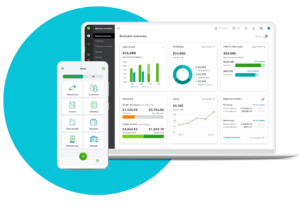Your professional bio is often the first impression you make. Whether it’s a LinkedIn summary, a personal website’s “About” section, or a bio on a company page, crafting the perfect bio can be challenging but highly rewarding. Here’s a complete guide to creating a professional bio that is engaging, concise, and effective.
What is a Professional Biography?
A professional biography is a summary of your career achievements, experiences, and expertise. It’s a chance to highlight your skills and accomplishments, showing your value to potential employers, clients, and other audiences.
Importance of a Professional Bio
Why Everyone Needs a Bio
Whether you’re applying for jobs, networking, or presenting yourself online, a bio builds credibility and makes you memorable. A well-written bio can showcase your skills and provide an insight into your personality.
How it Builds Trust and Credibility
A professional bio serves as a snapshot of who you are and what you offer. It builds trust by highlighting qualifications and achievements that make you a reliable and capable professional.
Types of Professional Bios
Long Bio
Long bios (up to 500 words) give a full picture of your background, education, and career highlights.
Short Bio
A short bio (around 100–150 words) is a condensed version that focuses on key experiences and skills, typically used for introductions or event listings.
Micro Bio
A micro bio is 1-2 sentences highlighting your role, company, or primary expertise, ideal for social media profiles.
Before You Begin: Gathering Key Information
Know Your Purpose
Your purpose may vary depending on where the bio will appear. For example, a LinkedIn bio will differ from a bio on a personal website.
Define Your Audience
Understanding your audience ensures that your bio resonates with them, helping you adjust your tone, detail level, and focus areas.
Step 1: Starting with a Strong Opening Statement
What Makes a Good Hook?
A good hook grabs attention immediately. Start with a statement that reflects your values or expertise.
Examples of Powerful Openers
Examples include: “A passionate marketing strategist with over a decade of experience,” or “An award-winning author dedicated to transforming ideas into words.”
Step 2: Highlighting Key Professional Experiences
Choosing Relevant Experiences
Select experiences that align with the purpose of your bio. For instance, focus on managerial roles if you’re targeting a leadership position.
Writing Tips for Experience Section
Use strong action verbs and keep it concise. Emphasize roles that demonstrate progression, skills, and impact.
Step 3: Adding Personal Touches
Balancing Personal and Professional Details
Including a hobby or interest can make you relatable. However, avoid being too casual—stick to details that add value to your bio.
Connecting with the Audience
Mentioning a relatable interest or experience can help establish rapport, especially when shared with your audience.
Step 4: Incorporating Achievements and Credentials
Listing Certifications and Awards
Accreditations, certifications, and awards add legitimacy to your bio. Include dates or specifics for credibility.
Incorporating Metrics to Show Impact
Adding numbers (like “increased sales by 40%”) illustrates your effectiveness and gives a measurable sense of your contributions.
Step 5: Keeping it Concise Yet Impactful
Importance of Brevity
An effective bio is concise yet informative. Focus on key information and avoid unnecessary details to keep readers engaged.
Editing Tips
Review your bio with fresh eyes, cutting out any fluff. Read it aloud to identify awkward phrasing or redundant information.
Step 6: Adding a Call to Action (CTA)
How to Guide the Reader Next
A CTA encourages your reader to connect or follow up. Examples include, “Connect with me on LinkedIn to discuss opportunities” or “Visit my website for more insights.”
Step 7: Reviewing and Polishing Your Bio
Proofreading for Perfection
Proofread for spelling, grammar, and clarity. Errors can detract from your credibility.
Getting Feedback
Share your bio with colleagues or friends for constructive feedback to ensure it resonates with a broader audience.
Examples of Effective Professional Bios
Sample 1: Entrepreneur Bio
“Entrepreneur and founder of [Company Name], [Your Name] has dedicated the last decade to helping startups scale through innovative marketing strategies.”
Sample 2: Corporate Bio
“[Your Name] is a seasoned project manager at [Company], known for delivering projects on time and under budget.”
Sample 3: Freelancer Bio
“Creative writer and editor with a passion for storytelling, [Your Name] helps businesses communicate effectively.”
Common Mistakes to Avoid in Professional Bios
- Overloading with Jargon – Keep it understandable.
- Leaving Out the Call to Action – Always guide readers on how to connect.
- Too Much Personal Information – Keep it professional and relevant.
- Lack of Updates – Regularly update your bio to reflect recent accomplishments.
- Not Tailoring to the Audience – Adjust based on where it’s posted and who will read it.
Conclusion
Writing a professional biography is both an art and a science. With the right structure, clear purpose, and attention to detail, you can craft a bio that captures your story, engages your audience, and strengthens your professional brand.
FAQs
What length should my professional bio be?
It depends on the platform, but generally, a long bio is up to 500 words, a short bio is around 100–150 words, and a micro bio is 1–2 sentences.
Should I write in the first or third person?
Both are acceptable. First person feels more personal, while third person is standard in formal contexts.
How often should I update my bio?
Update your bio annually or whenever you achieve a significant milestone or change roles.
What’s the best way to showcase personality in a bio?
Use a personal touch by mentioning relevant hobbies or interests to help readers relate to you.
How can I make my bio SEO-friendly?
Use relevant keywords related to your profession and industry. Optimize the bio by including these terms naturally throughout the content.












